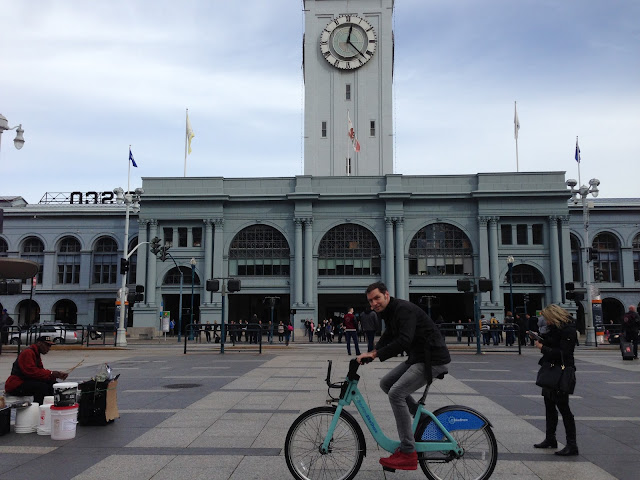Someone once said the art of creativity is 'disguised stealing'.
We all do it. I once wrote a TV ad for Sure deodorant which ripped off a scene from Indiana Jones. I used the scene where Indy fell through the top of a pyramid in to a pit of angry snakes. I even used the same snakes from the film. A rather obvious-shamefully-lazy can't-be-arsed- rip-off on my behalf.
The art of disguised stealing is to use, or appropriate, an idea that hasn't been seen by the brand's audience.
I have decided to rate some advertising ideas on how well they are disguised.
Disguise Rating: Out of 5.
1. A Royal Guardsman in full military uniform on a nudist beach.
2 A big toe toe nail in a small meat pie.
3 Groucho Marx mask made with real skin.
4 A bearded tit a hundred feet in the air with a flock of coal tits.
5 Harry Potter's Invisibility cloak worn by the Invisible Man.
Volvo. Live paint.
Originally used to paint deer antlers in Finland to cut down on road deaths. Widely reported on BBC news networks and the national press in early 2014. Later appropriated for Volvo and cyclists.
Disguise rating: 2. A big toe toe nail in a small meat pie.

Guardian newspaper and mock law trials.

You don't have to take too many clicks before you find films of theatre groups, schools and university law students running through mock trials of nursery rhyme characters. The trial of Goldilocks is a favourite at UCLA.

The idea for the 2014 award winning Guardian ad was woefully transparent. However, the execution added value and the writing craft and production took the idea to a new level.
Disguise Rating: 3. Groucho Marx mask made with real skin.
Toshiba and Simon Faithfull's video art.
The video artist Simon Faithfull's Escape installations came from a very personal feeling that he was 'tethered to a mundane realm.' His piece, Gravity Sucks, opened at the BFI in 2009. I doubt very much the audience for Toshiba had seen this. They were tethered to their own armchairs watching Grey's Space Chair ad on their Toshiba televisons.
Disguise Rating: 5. Harry Potter's Invisibility cloak worn by the Invisible Man.
Honda and Fischli and Weiss.

In 1986 artists Fischli and Weiss rented a huge empty warehouse and created an art film called The Way Things Go. The film showed 'everyday' objects colliding to create a fluid moving narrative.
In 2003 Fischli and Weiss threatened legal action against Honda for copying
their film for the Wieden and Kennedy produced ad called Cog.
Fischli and Weiss had refused several requests to use the film for commercial purposes,
Wieden and Kennedy eventually admitted to copying a
sequence of weighted tyres rolling uphill.
The controversy was blamed for denying Cog a Grand Prix at Cannes.
Disguise Rating: 4. A bearded tit a hundred feet in the air with a flock of coal tits.
David Letterman throwing coloured balls down a street and Sony Bravia televisions.
In 1996, David Letteman released thousands of coloured balls down a steep street in San Francisco.
In 2005, Sony did the same thing to promote the quality of their colour televisions.
When you take an idea from one of the most popular television shows to advertise a popular television shame has all but disappeared.
Letterman also released thousands of melons down the same street which curiously wasn't ripped off by a sports bra brand.
Disguise rating: 1. A Royal Guardsman in full military uniform on a nudist beach.

John Lewis and Youtube foxes.
Videos of foxes bouncing on trampolines
 have been appearing on Youtube
have been appearing on Youtube for over ten years now. I suspect the only fox films John Lewis shoppers watch is Basil Brush with their kids.
Disguise rating: 5. Harry Potter's Invisibility cloak worn by the Invisible Man.

This blog post.
Disguise rating: -1. A coal tit pretending to be a toe nail on a nudist beach of bearded tits in Groucho Marx masks made of real skin.































